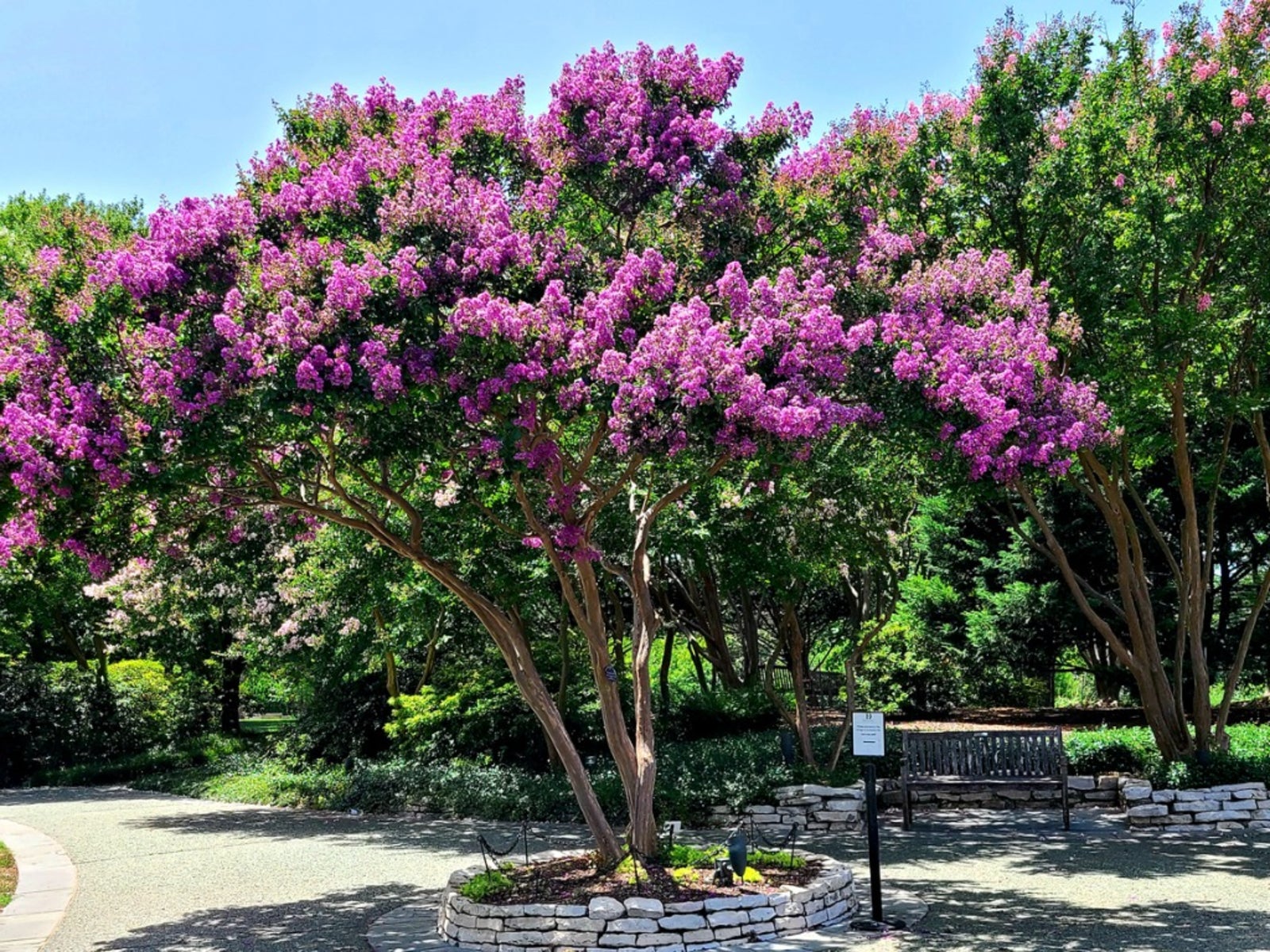Crepe Myrtle Trees: Tips For Crepe Myrtle Care


Crepe myrtle trees, in many varieties, overlook an abundance of southern landscapes. Southern gardeners love their crepe myrtles for summer bloom, attractive, peeling bark, and limited crepe myrtle care.
How to grow crepe myrtle is not an issue in most areas to which they are hardy, USDA Zones 9 down to 7 (with some special varieties surviving in zone 6), as they are easy to grow in the right location.
Information on Planting Crepe Myrtle
Planting crepe myrtle is similar to planting other shrubs and trees. Crepe myrtle trees should be planted in a sunny location. Soil need not be rich or amended; crepe myrtle trees are adaptable to most soils except those that are soggy. Sunlight and well-draining soil afford a wealth of summer blooms and help keep pests away.
Newly planted crepe myrtles should be well-watered until roots are established and are then mostly drought tolerant. Fertilizer is usually not necessary, unless blooms appear limited. Full bloom may not occur until the second year after planting. A soil test can indicate the need for fertilization. You can find soil test kits on Amazon.
Crepe myrtle prefers a soil pH of 5.0 to 6.5. When planting crepe myrtle in limited spaces, choose a smaller cultivar so that you won't be tempted to over prune. Crepe myrtle trees are available in dwarf varieties, such as the bright purple blooming Centennial and the deep red Victor. Or choose the semi-dwarf Caddo that blooms in bright pink. You can find many varieties of crepe myrtles at Fast Growing Trees.
Smaller varieties grow well in containers and some hybrids grow in colder zones.
Tips on Crepe Myrtle Care
The difficulty most often arises when caring for crepe myrtles. Crepe myrtles trees are sometimes susceptible to sooty mold and powdery mildew, but these are easily cured with an organic spray.
Sign up for the Gardening Know How newsletter today and receive a free copy of our e-book "How to Grow Delicious Tomatoes".
The most daunting and incorrectly practiced aspect of crepe myrtle care is pruning. Crape murder usually occurs when an overly enthusiastic homeowner severely cuts back top branches on crepe myrtle trees, ruining the natural shape and form of the lovely landscape specimen.
Caring for crepe myrtle should include limited pruning and little removal of growing branches. Too much pruning from the top sends suckers shooting from the bottom of the tree or the roots, resulting in additional pruning and unnecessary crepe myrtle care.
It can also result in an unattractive winter form. As mentioned above, crepe myrtles are sometimes attacked by powdery mildew that can limit blooms. Insects, such as aphids, may feed on succulent new growth and create a substance called honeydew that attracts sooty black mold spores.
Crepe myrtle care to get rid of these problems can include a thorough overall spray of insecticidal soap or Neem oil, like this option from Amazon. Remember to spray the underside of the leaves. Limit crepe myrtle care, especially pruning, to thinning when needed.
Now that you've learned how to grow crepe myrtle, plant one in your landscape this year.

Becca Badgett was a regular contributor to Gardening Know How for ten years. Co-author of the book How to Grow an EMERGENCY Garden, Becca specializes in succulent and cactus gardening.